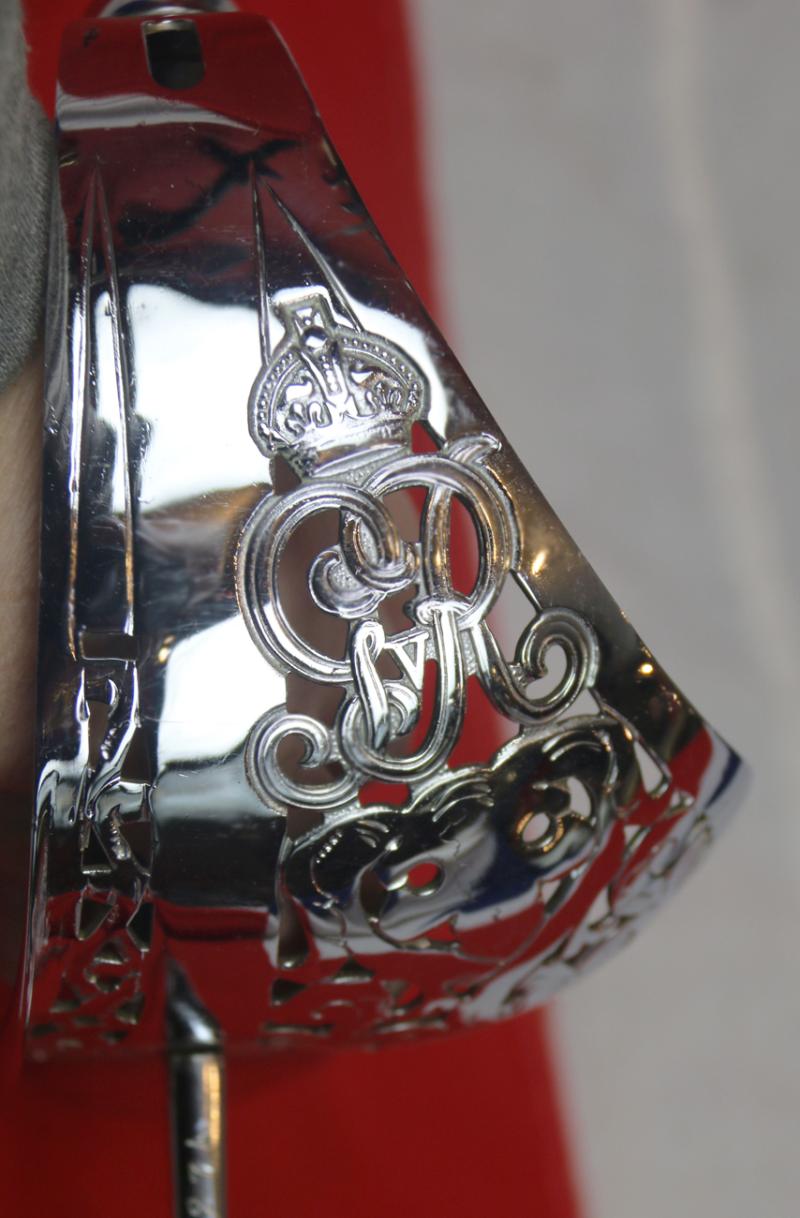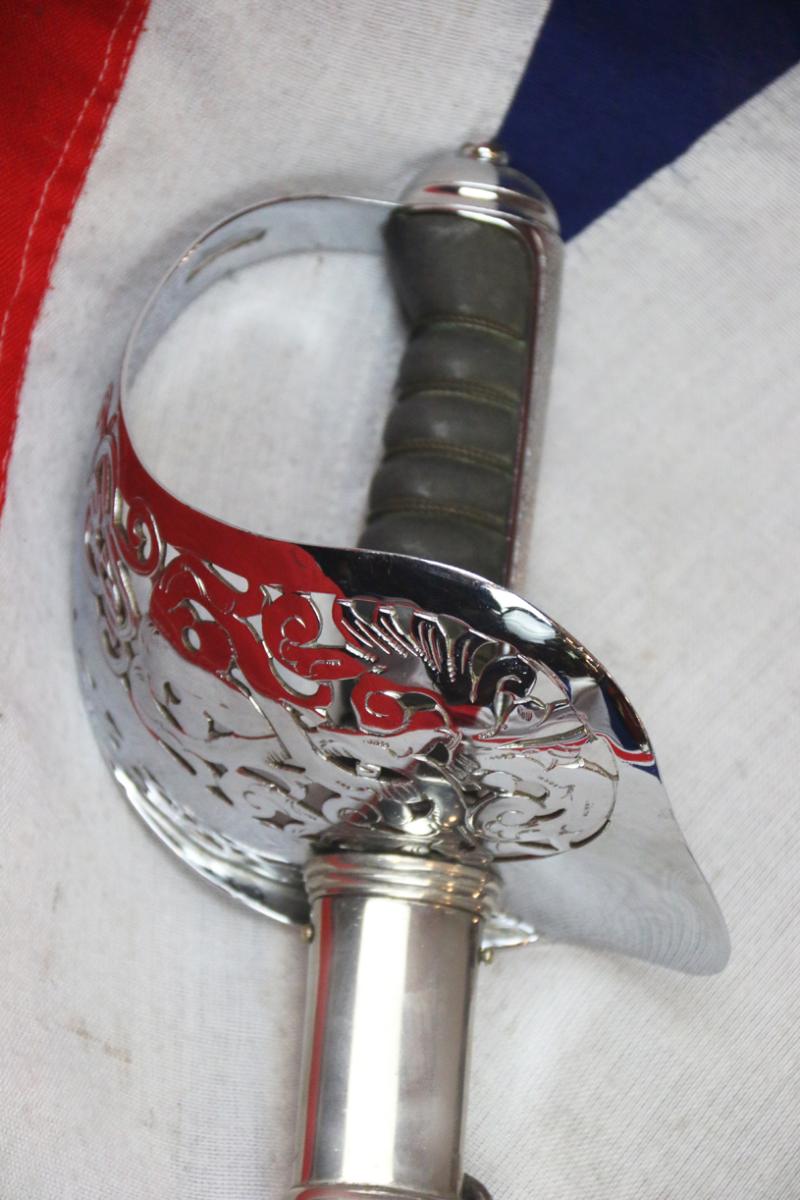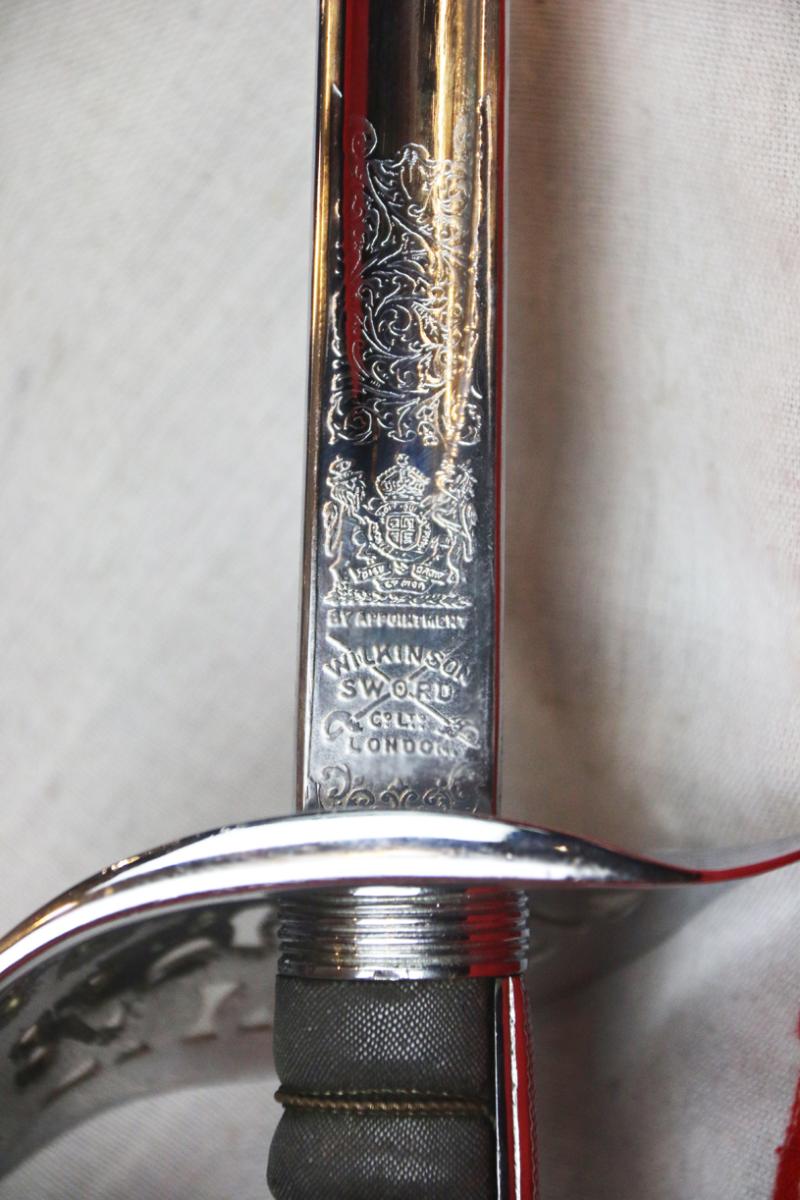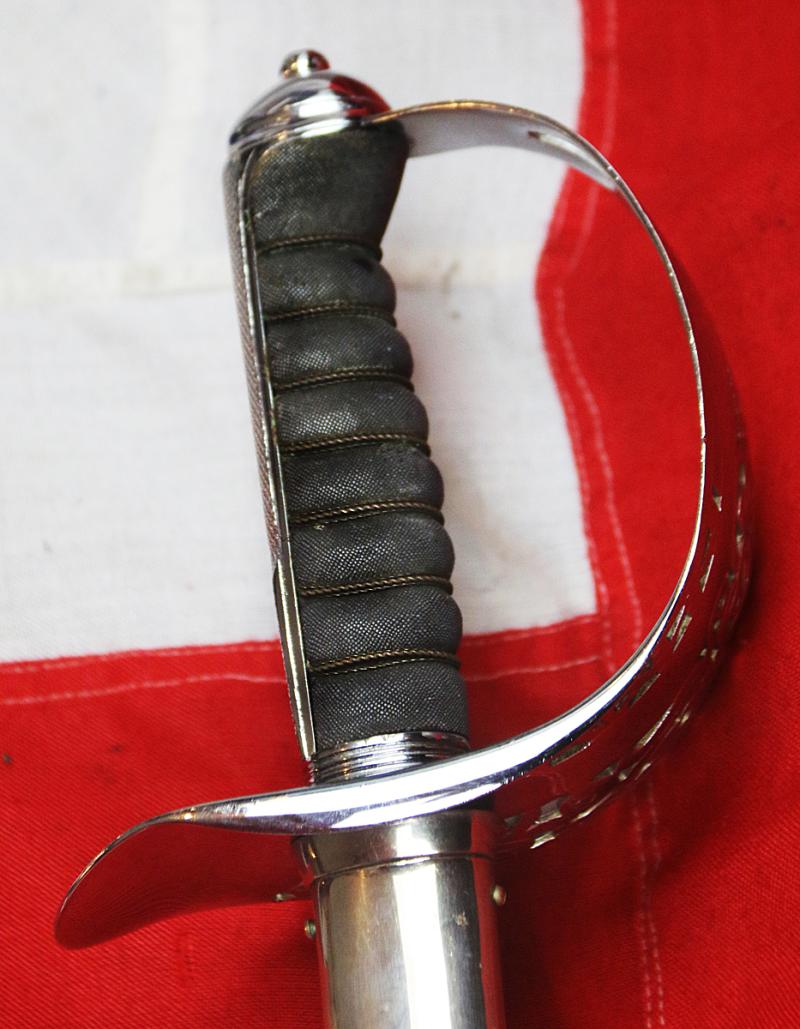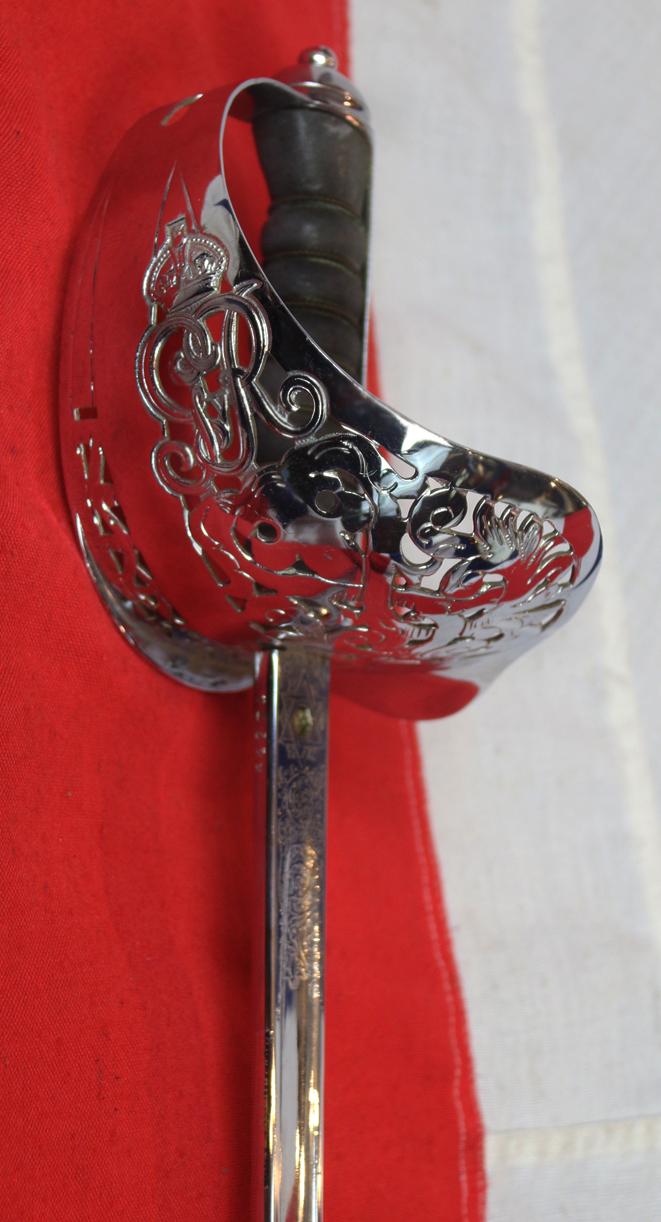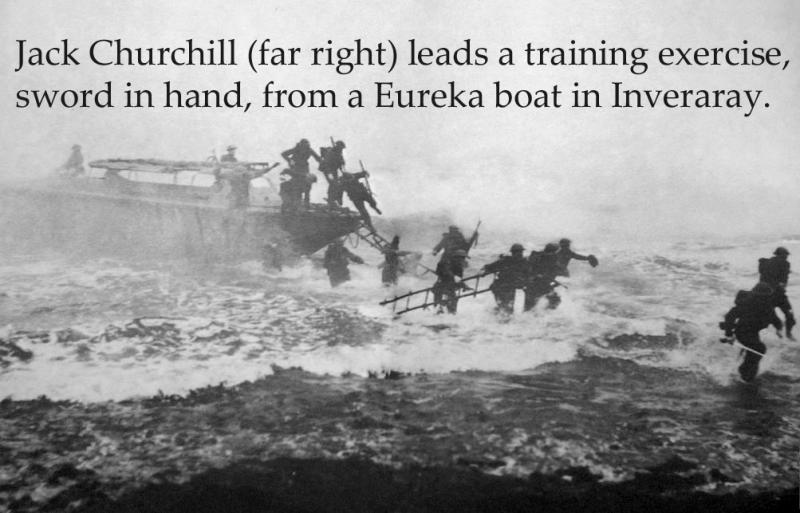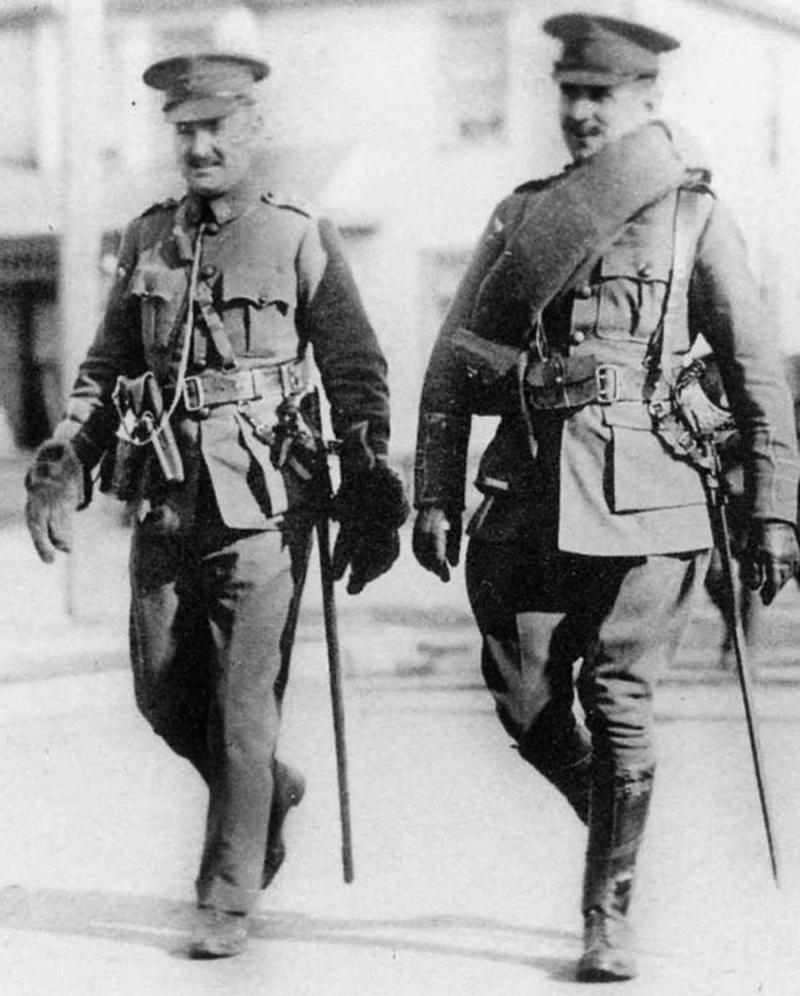An Excellent, WW1 Wilkinson Sword 1897 Pattern Infantry Officers King George Vth Period. Used In WW1 & WW2 Yet Still Perfect For Use Today
Apparently completely refurbished by Wilkinson sword around 20 years ago.
We just acquired effectively the full set of British Infantry swords used from 1895 onwards. The Victorian 1895 pattern by Wilkinson, a Victorian 1897 pattern by Robert Mole from the British Raj in India, a King George Vth, by Wilkinson, in its WW1 FS scabbard, and a King George Vth 1897 pattern Wilkinson sword in its dress scabbard, from WW1, but also used in WW2 and still perfectly usable today, by an officer in the current service of H.M.King Charles IIIrd
This sword was used in WW1 and WW2 and due to its condition it is perfectly suitable for current service use in the army today. Pristine hilt, traditional wire bound sharkskin grip, fully etched with royal cypher and traditional devices, excellent fully bright blade also now pristine, and superb full dress scabbard. Traditional pierced half basket hilt with the cypher of King George Vth. In parade ground condition almost as it was when it was made in WW1.
The 1897 pattern Infantry officer's sword has remained unchanged to the present day.
By the time of its introduction, the sword was of limited use on the battlefield against rapid-firing rifles, machine guns and long-range artillery. However, the new sword was regarded, when needed, as a very effective fighting weapon. Reports from the Sudan, where it was used in close-quarters fighting during the Reconquest of the Sudan 1896-99, were positive.
Field Marshal Montgomery advanced with his 1897 Pattern drawn during a counter offensive in the First World War. The actual sword he carried is exhibited in the Imperial War Museum, London.
The blade is straight and symmetrical in shape about both its longitudinal axes. The thick blade has a deep central fuller on each side and is rounded on both its edge and back towards the hilt, giving a “dumbbell” or “girder” cross section. Through a gradual transition, the blade becomes double edged towards the tip, and the last 17 inches were sharpened when on active service. The blade ends in a sharp spear point.
The guard is a three-quarter basket of pressed, plated steel. It is decorated with a pierced scroll-work pattern and had the royal cypher of the reigning monarch set over the lower knuckle bow.
One of the famous British officer's of WW2, who was a devoted exponent of hand to hand sword combat, using his sword in battle, was infantry officer 'Mad' Jack Churchill. After fighting at Dunkirk, he volunteered for the Commandos. On one occasion, a general who had commented on his weaponry, Churchill is said to have replied "Any officer who goes into action without his sword is improperly dressed."
In his service in Norway (1941)
Churchill was second in command of No. 3 Commando in Operation Archery, a raid on the German garrison at Vågsøy, Norway, on 27 December 1941. As the ramps fell on the first landing craft, he leapt forward from his position playing "March of the Cameron Men" on his bagpipes, before throwing a grenade and charging into battle. For his actions at Dunkirk and Vågsøy, Churchill received the Military Cross.
In Italy;
During the Allied invasion of Sicily
In July 1943, as commanding officer, he led No. 2 Commando from their landing site at Catania, in Sicily, with his trademark Scottish broadsword slung around his waist, a longbow and arrows around his neck and his bagpipes under his arm, which he also did in the landings at Salerno.
Leading 2 Commando, Churchill was ordered to capture a German observation post outside the town of Molina, controlling a pass leading down to the Salerno beachhead. 136–137 With the help of a corporal, he infiltrated the town, captured the post and took 42 prisoners including a mortar squad. Churchill led the men and prisoners back down the pass, with the wounded being carried on carts pushed by German prisoners. He commented that it was "an image from the Napoleonic Wars". He received the Distinguished Service Order for leading that action at Salerno.
Churchill later walked back to the town to retrieve his sword, which he had lost in hand-to-hand combat with the German regiment. On his way there, he encountered a disoriented American patrol mistakenly walking towards enemy lines. When the NCO in command of the patrol refused to turn around, Churchill told them that he was going his own way and that he would not come back for a "bloody third time"
Code: 25126


